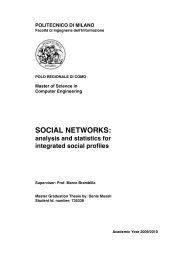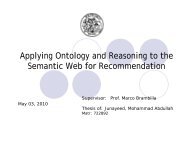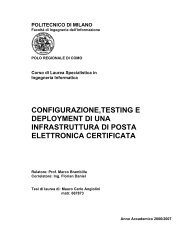Thesis full text (PDF) - Politecnico di Milano
Thesis full text (PDF) - Politecnico di Milano
Thesis full text (PDF) - Politecnico di Milano
You also want an ePaper? Increase the reach of your titles
YUMPU automatically turns print PDFs into web optimized ePapers that Google loves.
consists of a data schema, describing application data, and of one or more hyper<strong>text</strong>s (called site<br />
views), expressing the Web interface used to publish and manipulate such data.<br />
The specification of a WebML application consists of a set of models: the application data model<br />
(an extended Entity-Relationship or UML Class Diagram), one or more hyper<strong>text</strong> models (i.e.,<br />
<strong>di</strong>fferent site views for <strong>di</strong>fferent types of users), describing the Web application structure; the<br />
presentation model, describing the visual aspects. The hyper<strong>text</strong> main concept is the site view,<br />
which is a graph of pages; pages are composed by units, representing publishing of atomic pieces<br />
of information, and operations for mo<strong>di</strong>fying data or performing arbitrary business actions. Units<br />
are connected by links, to allow navigation, parameter passing, and computation of the hyper<strong>text</strong>.<br />
We do not exploit MDA entirely but we inspired and do some transformation from WebML<br />
where WebML assures MDA.<br />
2.2 Web Modeling Language (WebML)<br />
Web Modeling Language (WebML) is a methodology for specifying complex web application<br />
design at the conceptual level. WebML guarantees a model driven architecture (MDA) approach<br />
for developing web application. This is a key factor for defining a novel generation of CASE tool<br />
for the construction of complex sites and for supporting advanced features like personalization,<br />
evolution and multi device access. It enables the high level description of a web application<br />
under <strong>di</strong>stinct orthogonal <strong>di</strong>mensions – structural model (the data content), composition model<br />
(the pages that compose it), navigation model (links between the model), presentation model (the<br />
layout and graphic requirements for page rendering), and personalization model (customized<br />
features of the contents). WebML consists a set of visual graphic notation to represent all the<br />
components for defining the conceptual schemas and to represent the hyper<strong>text</strong> interface. The<br />
WebML primitives are also provided with an XML-based (XMI format) <strong>text</strong>ual representation<br />
for specifying the data underlying the application. WebML exploits the ER (Entity Relationship)<br />
model which consists of entities defined as containers of data elements and relationships defined<br />
as semantic connections between entities.<br />
The specification of a site in WebML consists mainly four orthogonal perspectives:<br />
13


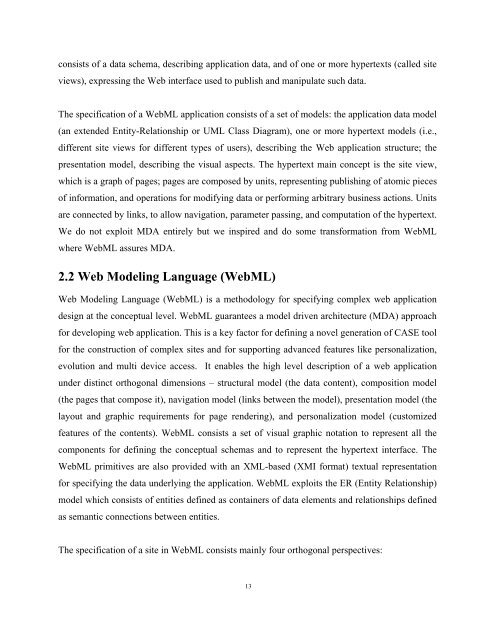
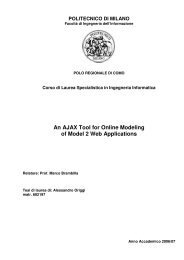
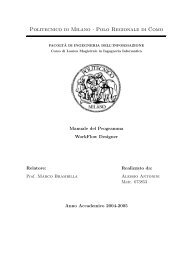
![Full text preview of the chapter [PDF] - Politecnico di Milano](https://img.yumpu.com/44021924/1/180x260/full-text-preview-of-the-chapter-pdf-politecnico-di-milano.jpg?quality=85)
